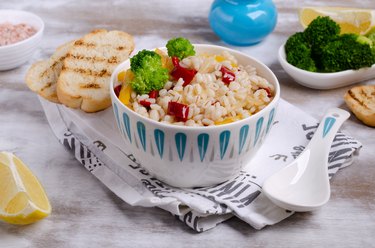
If it looks like a duck and quacks like a duck, then it's a duck, right? Where farro is concerned, that's not necessarily the case.
While farro can be easily confused with gluten-free grains like brown rice, farro is actually a variety of wheat, which means it's not gluten-free. So, if you're intolerant or sensitive to gluten, you'll want to keep farro far from your pantry.
Video of the Day
Video of the Day
Is Farro Gluten-Free?
The short answer: No.
Farro is a type of wheat, which means it contains gluten proteins, according to the Celiac Disease Foundation. Unlike most wheat, farro is often referenced independently, like quinoa, which is a gluten-free seed. For this reason, it can be easy to overlook the fact that farro is, in fact, wheat. It also doesn't help that farro looks quite a bit like brown rice, making it easy to confuse the two.
Farro (also known as emmer, a type of farro) is one of the earliest forms of wheat and originated in the Central Mediterranean region, according to the Whole Grains Council. A whole grain, farro is high in nutrients like fiber and calcium, both of which go largely under-consumed by most Americans, according to Toby Amidor, RD.
Generally chewy and nutty in flavor, farro is prepared in water or broth, like rice. The grain is usually eaten as whole-wheat kernels, or wheat berries, according to the Whole Grains Council. For those that can eat and tolerate gluten, farro makes a nutritious addition to soups, salads or just about any meal.
Gluten-Free Alternatives to Farro
If you're looking to add some grains to your daily diet but want to avoid gluten, there are plenty of alternatives you can consider. Quinoa, buckwheat, rice and millet are some pretty close comparisons and make an easy swap for wheat, according to the Celiac Disease Foundation.
While grains like brown rice or millet are naturally gluten-free, you should always double-check the packaging. First, read the ingredient list to verify there's no wheat, rye or barley-based ingredients in the grains you're buying.
Or, look for a gluten-free label on the package, Amidor recommends. This is an FDA-regulated mark that indicates the foods contain less than 20 parts per million (ppm) of gluten, making them generally safe for consumption, according to the FDA.
You may also notice a seal from the Gluten-Free Certification Organization. This third-party group strictly tests and certifies thousands of gluten-free products. Any package with this seal contains fewer than 10 parts per million of gluten.
Tip
If you want to ensure a food product is gluten-free, look for either a gluten-free label or seal on the packaging. Always double-check the nutritional panel and ingredient list, too!
If you want to add some gluten-free grains into your diet, consider these options.
1. Natural Earth Products USDA Organic Kasha
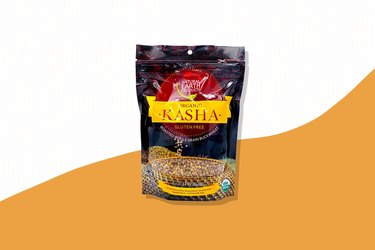
Buy it: Amazon.com; Price: $12.95
2. Pride of India Organic Three-Color Quinoa
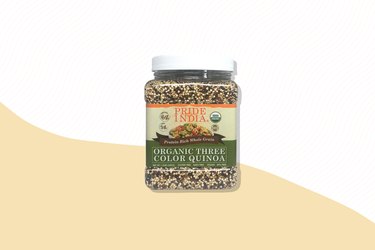
Buy it: Amazon.com; Price: $9.99
3. Bob's Red Mill Whole Grain Millet
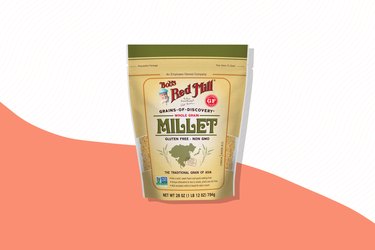
Buy it: Amazon.com; Price: $11.84
Gluten-Free Grain Recipes to Try
If you've stocked up on gluten-free grains, you can incorporate them into your daily diet with these three easy-to-make recipes.
1. Simple Morning Quinoa
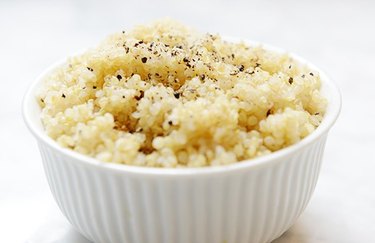
Even though it's actually a seed, quinoa is often treated as a grain because it looks and cooks like one, as in this simple recipe. All you need is three ingredients and 15 minutes to whip up the perfect side dish for your breakfast. Serve it alongside fried eggs or even stir it into an omelet. This quinoa also packs 6 grams of fiber to keep you feeling satiated throughout the morning.
Get the Simple Morning Quinoa recipe and nutrition info here.
2. Cinnamon and Spice Millet Porridge

Whether it's autumn or not, a cinnamon-flavored breakfast is always a great idea. This recipe combines a cup of millet with a variety of nuts and seeds, adding some healthy, unsaturated fats to your breakfast. Nuts are great for your heart health and may help lower both cholesterol and inflammation levels, according to the Mayo Clinic.
Get the Cinnamon and Spice Millet Porridge recipe and nutrition info here.
3. Gluten-Free Breakfast Pizza With Cinnamon Honey Drizzle
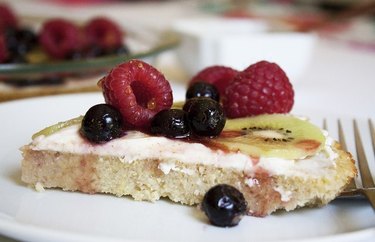
Gluten-free pizza for breakfast... Say no more. This sweet pizza recipe takes only 26 minutes to prepare and is full of healthy whole grains such as quinoa and millet. Instead of mozzarella cheese and pepperoni, this breakfast pizza is topped with fruit, giving your breakfast a good dose of vitamins and antioxidants.
Get the Gluten-Free Breakfast Pizza With Cinnamon Honey Drizzle recipe and nutrition info here.